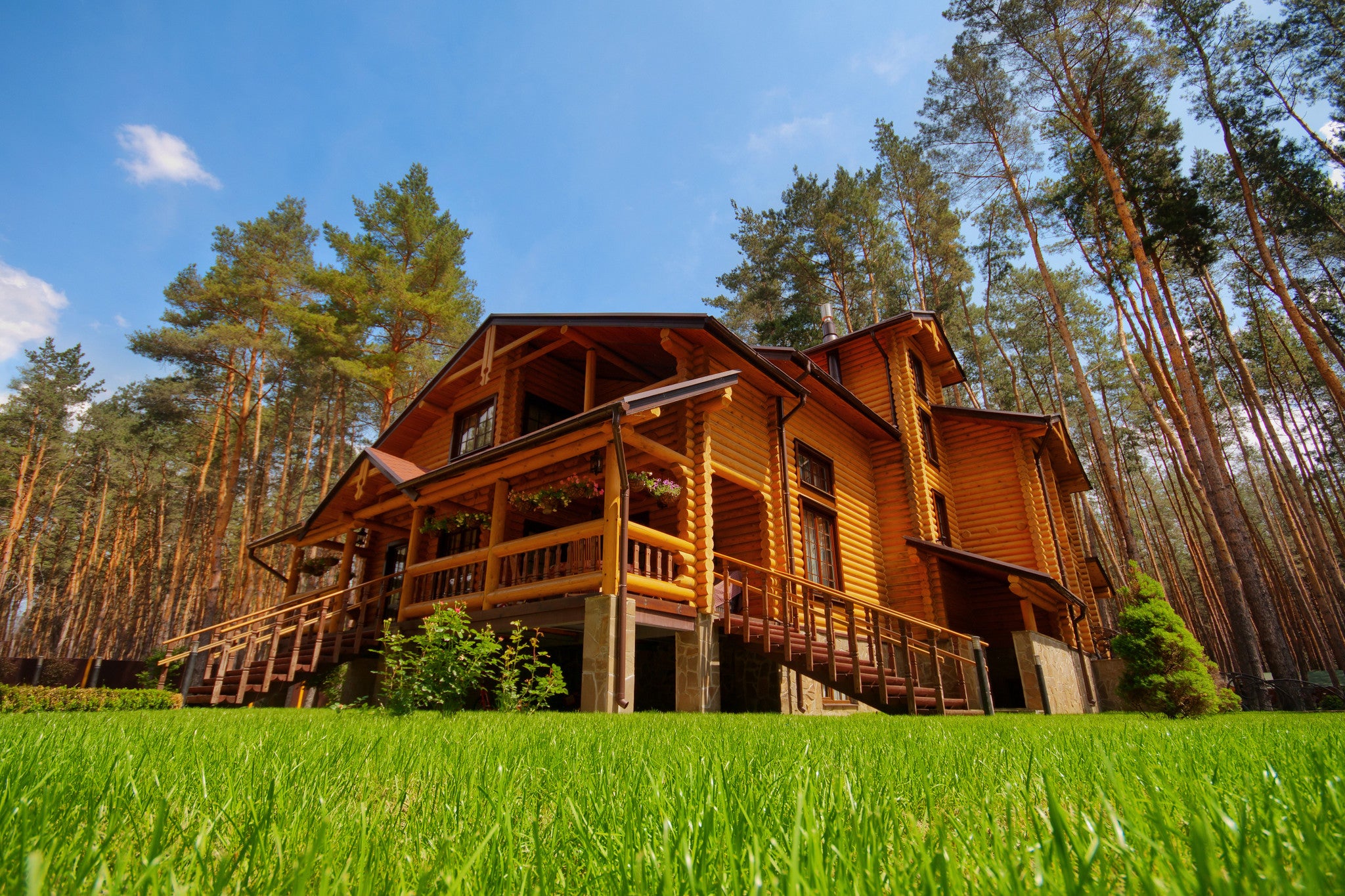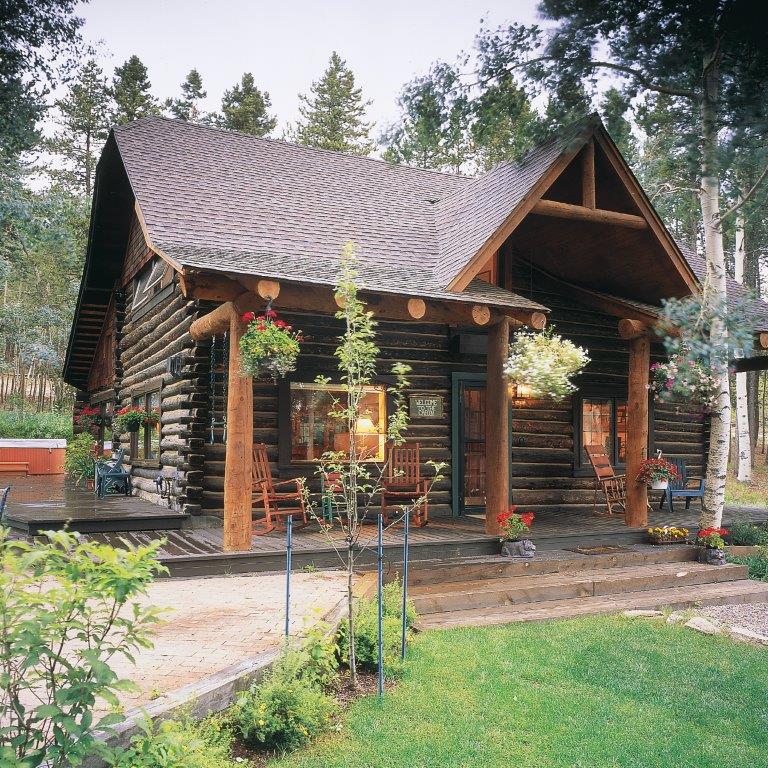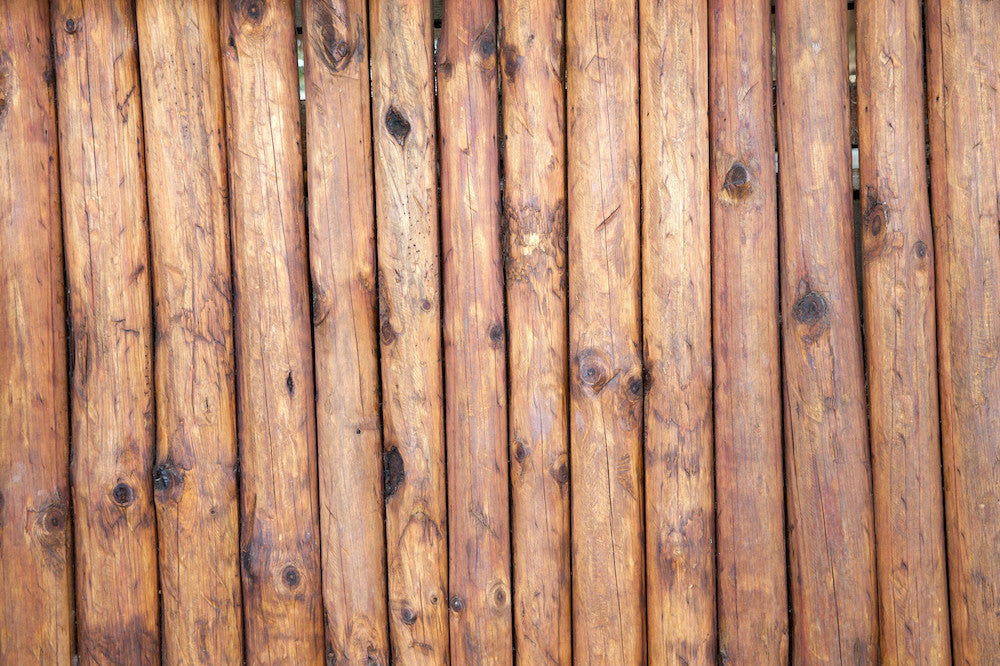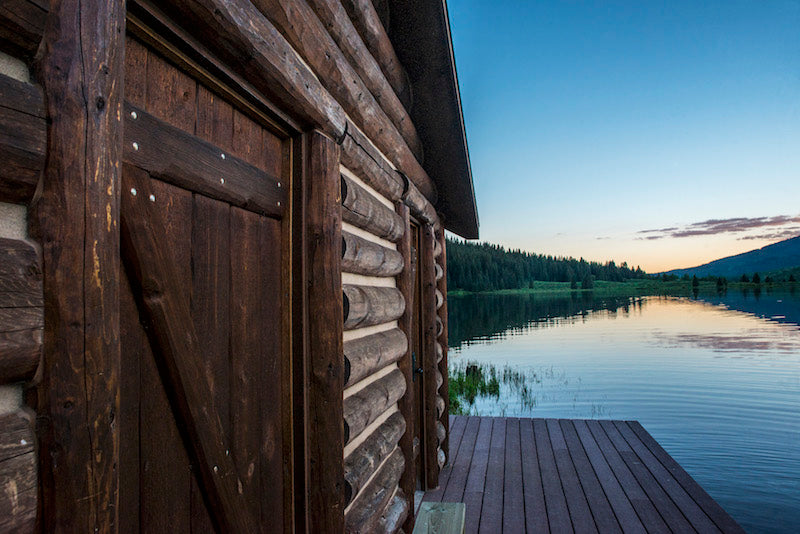Ten Mistakes to Avoid When Building a Log Home

Have you ever spoken with anyone who built a log-home and had some form of builder’s remorse? Perhaps that person didn’t do all the research to ensure any potential problems would be avoided.
The bottom line is, unintended oversights occur when building any kind of home—whether a log home or traditional style. If you’re planning on building a log home, there are some crucial considerations to take into account to make sure all goes well. Some mistakes are fixable while others are not; and how disheartening it would be to construct a log home only to discover, too late, that you’re stuck with one or more oversights that will live with you 24/7.
Let’s take a look at 10 common mistakes people make with log-home construction—mistakes you can easily avoid with proper planning and proactive insight!
1: Improper Log Placement:
Logs, being the organic material they are, must be catered to in order to preserve their longevity. Yes, logs are tough, but they still need to be babied. If they’re placed too close to the ground, they’ll be subjected to an overabundance of moisture—water-saturated ground due to rains or melting snow; and even enough splattered water from sprinkler systems and unavoidable rains can wreak havoc on logs too close to the earth.
Make sure the bottom rows of logs are a minimum of 1 and one-half feet above the ground. To ensure even further protection, apply an ice and water-shield product to the two-most bottom layers of logs—a little extra protection will go a long way!
2: Bypassing Larger Overhangs and Gutters:
Again, keeping logs as dry as possible is the name of the game. Cutting corners on carpet, for example, is fine, but trying to save money by using undersized overhangs will cost more in the long run. If you’ve ever noticed large roof overhangs surrounding a log home, there’s a good reason for that—minimizing moisture contact! Logs will stay dryer when the sides of a log home have 24-30-inch overhangs and the ends of the home having overhangs anywhere from 4 to 6 feet.
And don’t skip on the gutters and downspouts! They will play a major role in keeping unwanted moisture away from the home—they are a necessity, not an option.
3: Going Over-board With The Wood Theme:
Almost everyone loves the rich, warm look that woods provide in a log-home environment. Some zealous wood-lovers go a bit over-board, however, by including wood everywhere—the walls, floors, ceilings, beams, railing, cabinets, furniture—you name it-- it’s wood all over the place! This is commonly called, “too much of a good thing”. Living with “wood-overload” could become a bit tiring after a while, so be sure to break up the beauty of the woods in your home with carpeting and tile.
Countertops offer another opportunity for adding a splash of contrast. Using colored or patterned concrete, granite or stainless steel countertops can provide a stunning, eye-catching interruption with the flow of the wood throughout the home. Another consideration is using drywall on some of the interior walls. Not every wall needs to have a log-like appearance; and drywall can be textured and painted to deliver a contrast with the wood while complementing it at the same time!
4: Logs Not Properly Cleaned:
Making sure your logs are properly cleaned is paramount! Logs will develop an unwanted surface condition known as “mill glaze” which will appear as a shiny covering. When certain resins rise from the interior of the logs, the mill-glaze will appear. Timbor and Borado-D are two types of products that will eliminate mill-glaze which, if not removed, will prevent finishing products from effectively adhering. Also, not treating logs with an insecticide will simply invite insects and arachnids to make themselves welcome; and burrowing insects, especially, need to be kept at bay. Logs should, also, be water-proofed so mold, mildew and rot will never be allowed to spread.
5: Not Paying Attention To Log Moisture Levels:
Yes, here we are talking about moisture, again. There’s just no getting around the fact that moisture is log-enemy #1 due to its ability to invade wood fibers and allow for contamination and deterioration. But knowing the moisture level of your logs is important as it applies to log movement—the higher the moisture content of your logs, the greater the twisting, shrinking and overall log movement. Gaps between logs due to prolonged log movement would present problems you don’t want to have to deal with.
Logs that are not kiln dried should be protected in a dry environment and allowed to dry out for a minimum of 6 months prior to construction. With that being said, when it’s time to stain the logs, the moisture level should be below 15%, though during the construction phase of a log home, the moisture content of the logs can be closer to 20%. An accurate method for determining the moisture content of logs is to use a moisture meter which can be purchased at home-supply outlets. These nifty gadgets will provide a reading of the approximate moisture content of any species of wood.
6: Overlooking Sales Tax On Log-Home Kits:
How would you like to be hit will an unexpected bill of nine or ten-thousand dollars that seemed to come out of ‘nowhere’? This kind of nightmare has happened more often than you know to unsuspecting people who didn’t realize that many states will tack on a sales tax with the purchase of a log-home kit. When one purchases an unassembled log home or log-home kit, it is generally subjected to a ‘sales’ or ‘use’ tax. Even though you may have already paid property tax on your log home kit, a ‘use’ tax may still be applicable. The ‘use’ tax is for the purchase price of the home package and can easily add up to 10% of the cost of the kit—ouch! This is an incredibly important thing to research prior to buying a log-home kit.
7: Not Clearly Communicating With The Builder:
It’s important to realize that construction plans are not synonymous with floor plans. A construction plan will indicate the specifics of the building materials and construction methods; and if the details of materials and construction methods are vague and left up to the discretion of the builder, the homeowner can be stuck with a much higher bill. In all fairness, it shouldn’t be assumed that the builder knows exactly what the homeowner desires; and unless the homeowner is very specific about what he or she wants or doesn’t want, the builder might lean on his own interpretation of how the home should be assembled. This lack of communication can result in much higher costs for the new owner.
8: Prematurely Taking On The Role Of ‘Home-builder’:
The idea of building one’s own home and acting as the builder and saving thousands of dollars can be an exciting thought, but the word “realistic” should be at the top of the list. Too often, people get caught up in the anticipation of constructing their own log-home and discover, as things become increasingly more complex, that hiring a professional builder would have been the wiser choice. All too often, inexperience + desire to save $$ = disaster-in-the-making.
9: Not Monitoring The Construction Process:
If you have hired a builder, you have every right to visit the building site anytime you wish. But any visitations should go beyond the sheer enjoyment of observing the progression. Regular visits should be geared toward making sure the details you envisioned come to fruition—case in point: one Colorado couple had requested copious amounts of exterior lighting to be installed to showcase their home at night. The electrician installed only minimal lighting due to a miscommunication between him and the builder. As a result, additional lighting was added, but not until after a lot of haggling, charged emotions and additional expenses.
Be onsite during each phase of building--log raising, roof installation, lighting, log-placement etc. Get a schedule of events from your builder to ensure you can be there to rectify any errors that might occur—and errors do occur! As one home-owner states, “We never thought to oversee our home’s construction but finally did make the 200 mile drive to see the progress. We ended up with a home that was a mirror image of our chosen plan—everything was flipped—what should’ve been on the left was on the right and what should’ve been situated on the right was constructed on the left”. I rest my case.
10: Underestimating The Importance Of Energy-Efficient Options:
Too often, people will cut corners on the construction of their log home and choose not to purchase energy-efficient appliances, windows and HVAC systems. And it’s true, lower-end appliances and systems will cost less up front, but the higher amounts generated on utility bills each month due to lower-end choices can prove to be a shocker. EnergyStar appliances and building materials are designed and proven to be unsurpassed with air-sealing and insulation capabilities as well as offering impressive energy-efficiency—all, of which, will dramatically cut utility costs. It’s much more cost-effective to install higher-end appliances during the construction phase than to purchase expensive replacements later on. When inferior materials are part of the plan, energy costs go up.
There’s an incredible amount of detailing to consider when building a log home, but builders remorse shouldn't be included. As with any project worth pursuing, do the necessary research, ask lots of questions, hire a reputable builder if necessary, invest in quality materials and keep current on all maintenance schedules. After all, your log home is a huge investment—financially and emotionally—and doing everything correctly from the very beginning only makes sense!





